What is the difference between the bases
You can find light bulbs of different types on sale. The most common are the E14 and E27 socket - the difference between them for many is not obvious. But if you make a mistake when choosing, you will have to change the bulbs or sockets in the lamps. Therefore, it is easier to understand the features of these options in advance to choose the best solution for your home.
Features of E27 and E14 bases
Most often on sale there are screw and pin bases, which differ in the attachment of the lamps. The variants considered in the review belong to the same type. It is denoted by the letter "E" (short for "Edison Screw type") and is called the Edison base, because it was he who patented this design in the early 20th century.
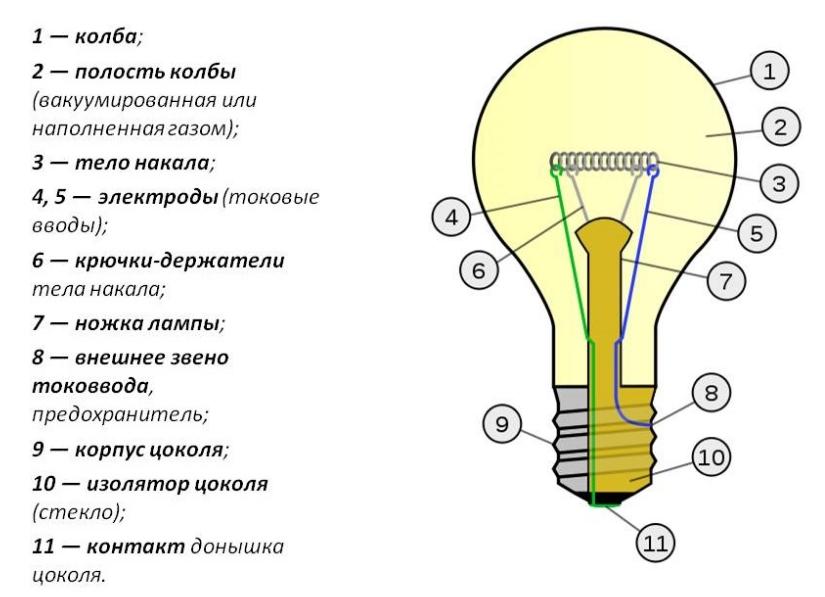
This variety is distinguished by the fact that the bulbs are screwed into the socket by a special thread, which provides a reliable fixation of the light source. The main features are as follows:
- The voltage is supplied through a central contact located at the end of the back. The socket has a spring element that presses firmly against the surface and ensures the transfer of current with the minimum possible degree of heat.
- The neutral wire is connected on the side and fed to the threaded part. This system ensures the safety of the design and eliminates human electrocution when replacing the bulb.
- Products are always made of metal. As for sockets, they can be ceramic, carbolite and plastic. Each of the solutions has its pros and cons, but it is ceramic is considered the most reliable and serves many times longer.
- The thread pitch is the same for both options. It is standard regardless of the type of construction and its diameter.
In Europe these variants are marked differently. E27 variant is called ES, and E14 is called SES. In this case, the operating parameters of the bulbs do not differ in any way.
Both varieties are designed for voltages not exceeding 250 V. Therefore, the main direction of their use is domestic lighting. It can be lighting fixtures of any type, decorative lighting or street lighting. But for outdoor use, lantern models with an increased degree of protection against moisture are chosen.
For which lamp types the E27 and E14 bases are suitable
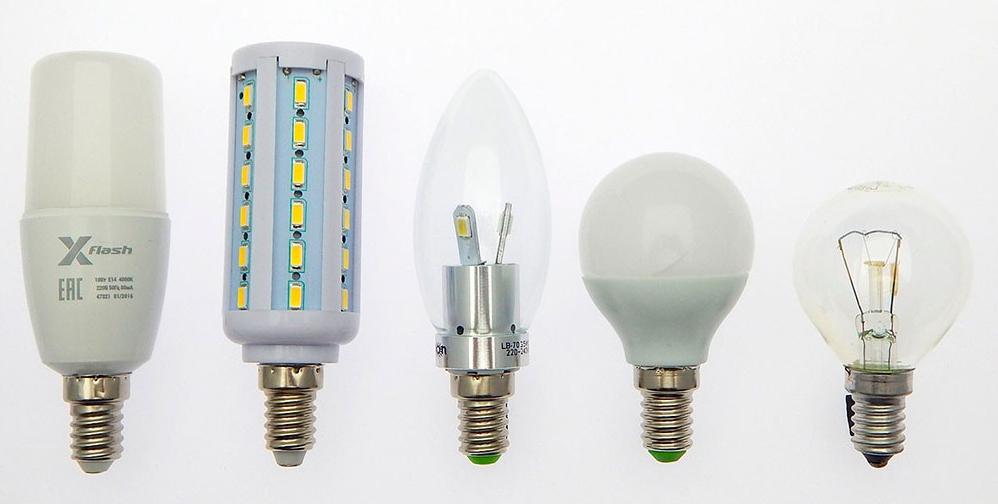
The easiest way to look at the main options for light sources and see the differences in their applicability with different bases. It's simple enough here, you can figure it out quickly:
- Incandescent bulbs most commonly available with an E27 socket, this is the traditional solution. They can have a capacity of up to 200 W and are used in all types of equipment. As for the E14 variant, only bulbs with a filament of no more than 60 watts can be put in it.
- Fluorescent equipment can be used with both types of bases without any restrictions. Power consumption of this type is low, so it is suitable for a variety of equipment. But there are restrictions on the configuration, as the luminous part is quite voluminous.
- Halogen variants have a similar design to incandescent lamps. But compared to them, they have more brightness and allow for better lighting quality. Available in a variety of sockets, so you can find a suitable solution for any type.
- LED bulbs are the most economical bulbs available today. They are available with two types of bases and almost no difference in performance parameters. At the same time, diode equipment does not heat up when working, which prolongs the life of the sockets.
Advantages and disadvantages of E27 and E14 sockets
Each option has pros and cons, which are worth considering when choosing a chandelier or other lighting equipment. The main advantages are as follows:
- The E27 socket is the most common in our country. You can buy a light bulb of this type in any hardware store and many grocery stores. This option is available even in the most remote villages, it is easy to use and safe. And the price of such products is the lowest of all.
- The E14 variant is found in most modern luminaires made abroad. It is not as common in our country, but it has one big plus. You can buy an adapter, and then the light bulb with E14 socket can be screwed into the socket E27, which is very convenient.
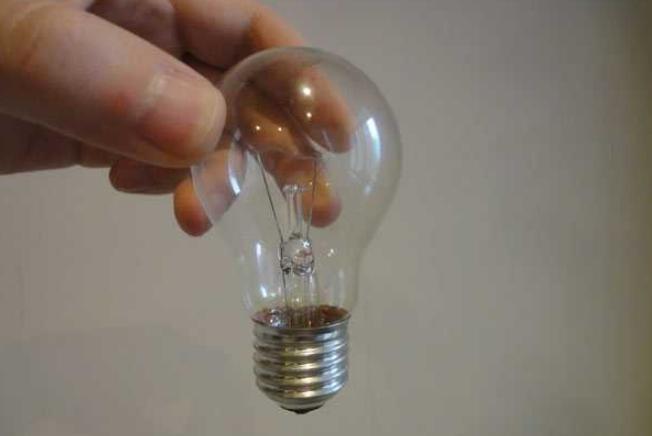
Of the disadvantages, it is worth noting that both varieties can get stuck to the socket when overheated, and replacing the bulb will cause great difficulty. Over time, the central contact loses its elasticity and must be bent to hold it securely.
It is recommended to replace the sockets for both types of bases with new ones for preventive purposes at least every 5 years.
What is the difference between E27 base and E14 base
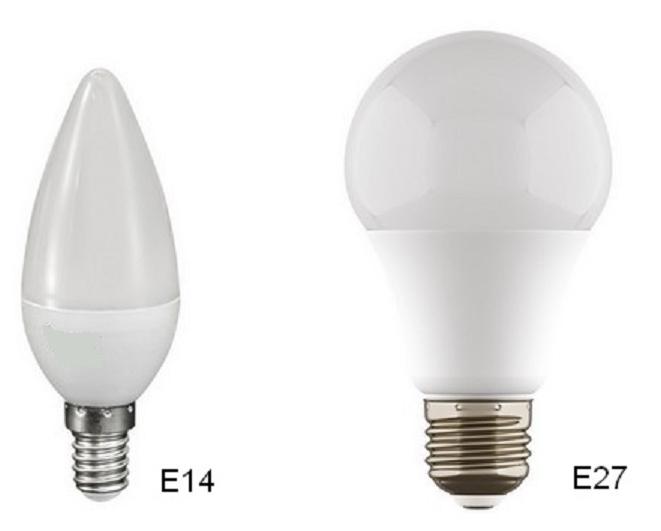
It is easy to distinguish one variant from the other because they have different sizes:
- The E27 variant has a threaded diameter of 27 mm. Its height is exactly the same and is 27 mm. In fact, it is the most common light bulb, familiar to almost everyone.
- The E14 base is much smaller in diameter - 14 mm. That is, the numerical designation indicates the size of the element, which is very convenient.
Another difference can be considered a smaller capacity bulbs with E14 bases. They are not designed for high loads, the best solution will be low-power LED or fluorescent lamps. That is, if you take apart the E27 and E14 socket - the difference is only in diameter, everything else is similar.
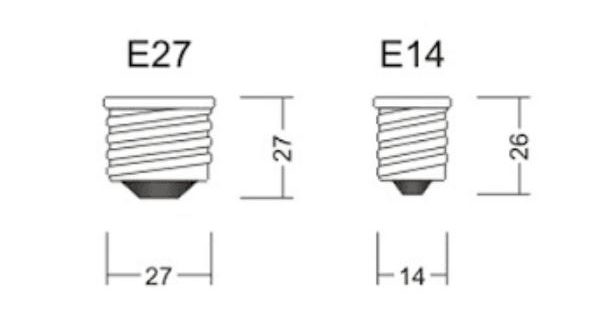
What are the common features of the E27 and E14 socket
If you disassemble the common features, first of all it is worth noting that both variants belong to the same type - threaded sockets. They use Edison threads, and the pitch on it is the same regardless of the diameter.
It is worth noting the same thread height - 27 mm. This is the standard to which all manufacturers adhere. The structure of the lamps is also exactly the same, except that the size and configuration of the glass bulb differs. If incandescent bulbs are always transparent, the LED versions are often matte for better light scattering.
Video: Let's look at the example of a difference between lamp socket E14 and E27
It is easy to distinguish the E14 base from E27, you do not need to be an electrician to do this. The difference in diameter can be seen by eye, so no measurements are needed. You must remember that you can put E14 bulbs in E27 socket through an adapter, but you can not do the opposite.